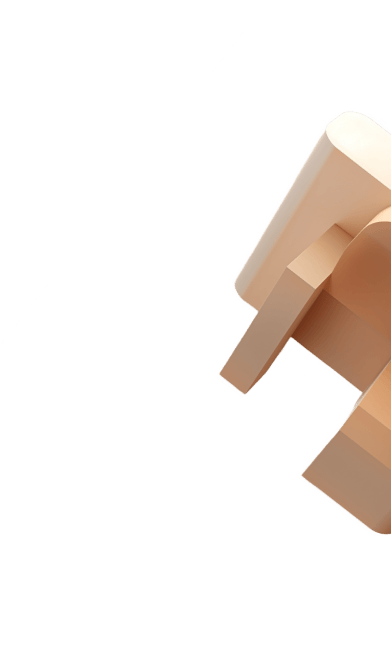90% LTV mortgages
Compare 10% deposit mortgage deals and learn more about 90% LTV mortgages with insights from our expert advisors.
Buying a home is a significant financial decision, and securing a mortgage is an essential part of the process. A 90% Loan-to-Value (LTV) mortgage means you can borrow 90% of the property's value and provide a 10% deposit.
What is a 90% LTV mortgage
A 90% Loan-to-Value (LTV) mortgage is a home loan where you borrow 90% of the price of the property you want to buy. This means that the deposit you’ll need to provide is 10% of the property’s value.
For example, if you want to buy a home for £250,000, a 90% mortgage would mean you borrow £225,000 and provide a deposit of £25,000.
90% is considered a high LTV and can come with less favourable interest rates because they pose a higher risk to the lender.
Compare 90% LTV mortgage deals
Compare 12,000 deals from over 100 lenders. One of our advisers can check whether you're eligible for the 10% deposit mortgage deals you find.
Can I get a 90% LTV mortgage?
Approval for a 90% LTV mortgage depends on several factors, including:
When determining the possibility and extent of your borrowing, lenders will examine your credit history. A reasonably good credit score is typically necessary to secure a 90% mortgage.
When you apply for a mortgage, lenders will look at your income to assess whether you can afford your repayments. They’ll also stress test your income to check if you’ll still be able to afford your repayments if interest rates rise in the future.
Your regular expenses and financial obligations will also be considered when assessing your affordability. If your committed spending is too much of your income, the mortgage lender may think you’ll struggle to repay your mortgage.
No matter how much deposit you have, you’ll only be able to borrow what you can comfortably afford to repay. It’s worth using a mortgage calculator to work out how much you’re likely to be able to borrow based on your income and deposit amount.
You’ll need a 10% deposit saved and ready to go. You’ll also need to ensure you’ve budgeted for any additional costs associated with buying a house, such as solicitors fees and stamp duty.
Lenders can have stricter eligibility criteria for mortgages with a high LTV.
In times of economic uncertainty or when market interest rates are particularly volatile, lenders may be more cautious about offering high LTV mortgages.
Our expert says...
“A 90% LTV mortgage can be a viable option for those looking to get onto the property ladder with a small deposit. However, high loan-to-value mortgages can come with less favourable terms, so it’s important to think carefully before applying.
“You’ll also need to remember to factor in all additional costs before buying a house. Our expert mortgage advisors are on hand to help you navigate this process from start to finish”.
Jonathan Bone - Lead Mortgage Adviser
Loan-to-Value (LTV) is the ratio of the mortgage amount to the property's value, expressed as a percentage. If you’re a first-time buyer, your deposit is the amount of the property value you’re not borrowing.
So, if you were buying a house worth £400,000 with a £40,000 deposit and borrowing £360,000, you’d have a 90% LTV.
To see your LTV, use our LTV calculator
With the rising costs of renting, it can be difficult to save a large deposit; a 90% mortgage can be a reasonable way to help take the first step onto the property ladder if you’re struggling to save.
However, it’s important to remember that high Loan-to-Value (LTV) ratios are often accompanied by higher interest rates and larger monthly repayments, which could cost you more in the long run.
90% LTV buy-to-let mortgages aren’t as common but may be available from some lenders. Buy-to-let mortgages typically pose more risk to lenders because of the risks associated with renting properties.
Because of this, lenders are less likely to add the additional risk of a high LTV. Typically, buy-to-let mortgages require a 20-40% deposit.
Should the value of your property have increased and you've managed to reduce a portion of your mortgage debt, you could potentially explore the option of remortgaging to achieve a Loan-to-Value (LTV) ratio of 90%.
However, the same eligibility criteria and affordability checks will apply. You may also find that you’ll get less favourable terms than you currently have if you’re increasing your Loan-to-Value significantly.
The amount you can borrow with a mortgage will depend on several factors, such as your credit score, income, outgoings and available deposit. All lenders will assess your affordability differently, but all will consider these factors.
If you specifically want to put down a 10% deposit, you’ll need to borrow 90% of the purchase price of the property you want to buy. You can use our mortgage calculator to work out how much you can afford to borrow.
If you’re a first-time buyer or looking to buy a new home, a 90% mortgage can come with a range of benefits, such as:
Entry into the property market with a smaller deposit.
Opportunity to secure your own home sooner.
Potential for property price appreciation over time.
90% mortgages can be a helpful way to take your first step onto the property ladder, but can come with some drawbacks, such as:
90% LTV mortgage rates can be high compared to lower LTV mortgages.
Higher monthly repayments due to a larger loan amount.
Fluctuations in property prices could leave you vulnerable to falling into negative equity.
90% mortgage can be an effective way to get onto the property ladder. However, they often come with high-interest rates and monthly repayments. Saving for a larger deposit could mean getting more favourable terms when applying for your mortgage.
What people are saying about Better.co.uk...
Get a mortgage with Better.co.uk today
Better.co.uk is a fee-free mortgage broker
4.8-star Trustpilot rating from over 9,000 reviews
Compare mortgage deals from over 100 lenders
Get matched with the right legal team with SmartBuyer
Fund a big expense with a Homeowner Loan

Important info & marketing claims
You may have to pay an early repayment charge to your existing lender if you remortgage. Your savings will depend on personal circumstances.
Your home may be repossessed if you do not keep up repayments on your mortgage.
*89% of customers will be better off using Better.co.uk rather than going direct with their lender. Read more on our marketing claims page.
We can't always guarantee we will be able to help you with your mortgage application depending on your credit history and circumstances.
Average mortgage decision and approval times are based on Better.co.uk's historic data for lenders we submit applications to.
Tracker rates are identified after comparing over 12,000 mortgage products from over 100 mortgage lenders.
As of January 2023, Better.co.uk has access to over 100 lenders. This number is subject to change.
For buy-to-let landlords, there's no guarantee that it will be possible to arrange continuous letting of a property, nor that rental income will be sufficient to meet the cost of the mortgage.


